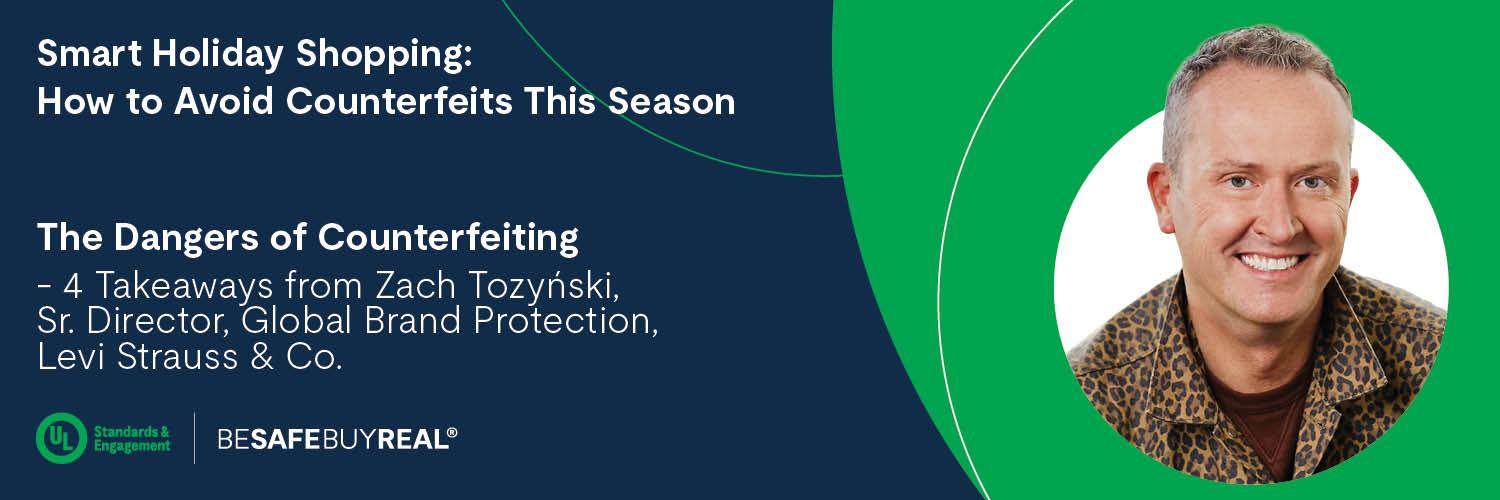The Dangers of Counterfeiting

The Dangers of Counterfeiting
— 4 Takeaways from Zach Tozyński, Levis Strauss & Co.

With the sheer amount of counterfeit goods traded (estimated at about $2 trillion annually), it can be daunting to navigate as a consumer — especially when you’re most worried about crossing all those names off your holiday list. But there is an impact — and a big one. Consider the fact that 87% of consumers who bought a counterfeit product have suffered negative consequences, including financial hits, illness and injury. With a consumer’s safety potentially at risk, brands are taking initiative to safeguard consumers.
Our partner, Levis Strauss & Co., is committed to and invests in protecting its consumers from counterfeit apparel. Zach Tozyński, the company’s Sr. Director, Global Brand Protection recently participated in our Facebook Live event — “Smart Holiday Shopping: How to Avoid Counterfeits This Season” — during which he discussed current counterfeiting trends, the dangers in buying fake products and his advice for safe holiday shopping.
Following are his top four takeaways.
The Danger is real and significant
I put the dangers of purchasing counterfeits into three different categories — people, planet and pocketbook. First, what you’re buying could actually harm you, especially because the source of these goods do not meet the regulations or standards that legitimate factories have. But, then take a look at where these products are being produced. Where they’re being produced is also harming people or putting the people manufacturing these products in jeopardy as a result of the working conditions or dangerous materials they are using to create the counterfeits. Second, there's nothing sustainable about the counterfeit goods being produced. If you're buying these counterfeit products, you're contributing to anti-sustainable methods because their methods are damaging the environment. Lastly, purchasing counterfeits is dangerous to pocketbooks. I’m not talking about the profits of large corporations, but the individuals that work at these companies and create these legitimate products might not have jobs because people are replicating their work.
Online shopping is convenient - but risky
Let’s just face it, we’re all online. We are moving away from brick-and-mortar to an online shopping experience, which was accelerated during the pandemic. But now, there is a group of people that might not have experience shopping online who are now engaging in e-commerce platforms, third party websites and social media to make decisions in their purchases. This presents opportunities for criminals to take advantage of these individuals who may not understand that clicking on one thing might take you to a website where counterfeit products are sold. It’s more difficult for consumers to navigate shopping online because you have to do a bit more research before you make a purchase.
Check it once, check it twice
When shopping online, consumers need to be very careful when they’re making purchases and they are searching for a brand they like on an e-commerce marketplace. Sometimes, these marketplaces aren’t authorized sellers of the brand you're searching for. And if they’re not associated with the brand, it runs a risk. Make sure that you’re buying a product directly from the brand itself or an authorized seller of that product to make sure it’s genuine. Just because it’s a good deal, doesn’t mean it’s good to buy! Don’t be afraid to contact a brand’s customer service to confirm if an e-commerce website is an authorized seller.
You are part of the solution
You hold the power. You can make an educated decision in your purchase. When you’re online, do your due diligence before you make that purchase. If you do, you'll be part of the solution, rather than a part of the problem.
